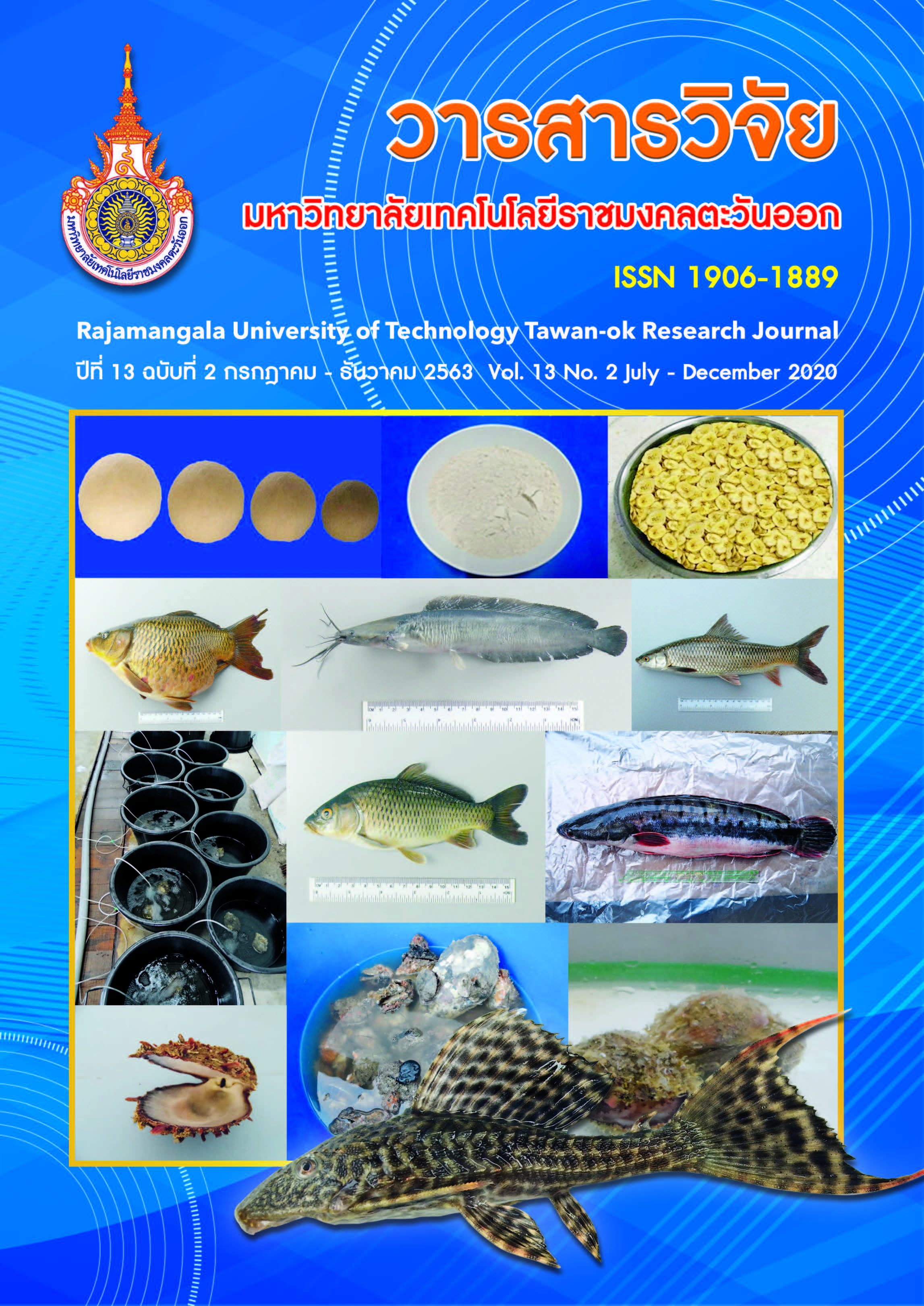The Integration of Local Wisdoms on the Pottery for the Development of Production Methods and Materials in Making Artificial Reefs
Main Article Content
Abstract
The research titled “The Integration of Local Wisdoms on the Pottery for the Development of Production Methods and Materials in Making Artificial Reefs” is an experimental research, the objective of this research is to study and analyze the integration of local wisdoms on the pottery into the design of artificial reefs as the habitat for small aquatic animals in the sea, and then evaluate the effectiveness of those artificial reefs. The scope of this research is the study on local wisdoms on pottery, pottery production process, pottery materials used to make artificial reefs and the attributes of artificial reefs located in the country and abroad. The data is collected from the surveys on the attributes and physical characteristics of natural reefs in the eastern coast of the sea and from the actual experimental data on artificial reefs in Thailand and overseas. The research results can be divided as follows: the study result from relevant documents and researches, conceptual framework showed the summary of artificial reef design with following design points: the shape of artificial reefs is semicircle with 800 Millimeter in diameter, 100 Millimeter in thickness and 400 Millimeter in height, the top and sides are drilled into a circle with a diameter of approximately 160 Millimeter for easy flowing in and out of water, allowing fishes to live within the spaces of artificial reefs and being a shelter for small fishes and a habitat for organisms. Based on the result of study of pottery materials, it was found that the pottery can be used to make artificial reefs and it is also environmentally friendly. In terms of the evaluation on the effectiveness of artificial reefs by experimenting artificial reefs to be placed in the area of the Gulf of Thailand, Bang Phra Sub-district, Si Racha District, Chonburi Province, under the collaboration with local fishermen, the artificial reefs were placed 15-meter depth from the surface of water and the data was collected every 1 month for 1 year, it was found that small aquatic animals have lived in them and the organism of sea barnacles has been formed in the area of artificial reefs with the increase of aquatic animals living in the area where those artificial reef were placed. In addition, it was also found that the artificial reefs were the habitat source for all types of aquatic animals, especially, as the safe shelter for small animals in the sea.
Article Details
References
[2]Fitzhardinge R. and J. Brock. 1989. Colonization of artificial reef materials by corals and other sessile organisms. Bulletin of Maring Scence, 44(2): 567-579, 1989.
[3]Jungtawong, K.1992. Thai Local Knowledge. Amarin Printing Group. Bangkok. (in Thai)
[4]Leesuwan, V.1998. Thai arts and crafts. Amarin Printing Group. Bangkok. (in Thai)
[5]Lohakang, N.1984. Coral building in Phang Nga Bay Sea fishing station Phuket Province. Department of Fisheries. Bangkok. (in Thai)
[6]Mathews, T.T. 1983. Artificial Fishing Reefs: Material and Construction Department Oceanography. ST. Petersburg Junior coll. Clearwater.
[7]Rungfah, Y. 2014. The Integration wisdom of local knowledge the pottery, for process and materials development to create artificial reef. Journal of Social Sciences, 4 (1), 90-97. (in Thai)
[8]Saetan, B. 2020. Sculptor Department of Underwater Ceramics for the promotion of coral reef ecosystem conservation Jang Temple of Krabi. Art Thesis Design Subject Art Silpakorn University. (in Thai)
[9]Siripetch, A. 2004. Artificial Reef Installation in the Southern Gulf of Thailand. in Proceeding of the and Regional workshop on Enhancing Coastal Restores. Artificial Reefs in Southeast Asia 9-12 November, (in Thai)
[10]Srisatidnarkul, B. 2007. Research Methodology. U&I Company Inter Media Co., Ltd. Bangkok. (in Thai)
[11]Suraswadi, P. 2008. Knowledge of artificial coral in Thailand. Department of Fisheries. Phuket. (in Thai)


